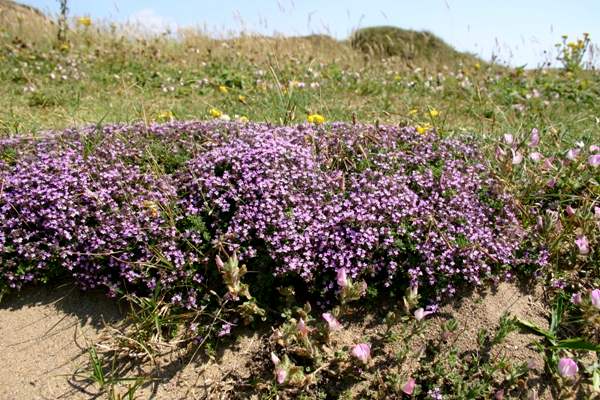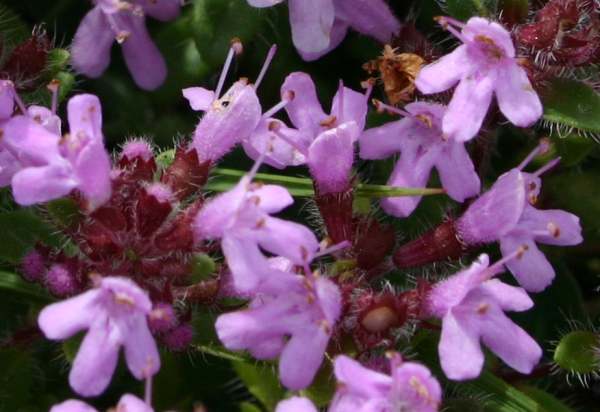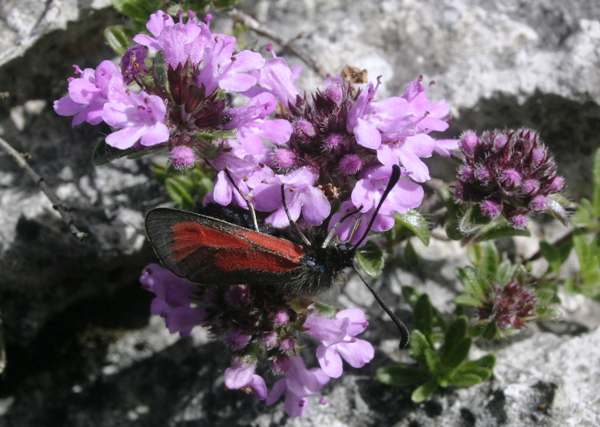Thymus polytrichus - Wild Thyme
Phylum: Magnoliophyta - Class: Equisetopsida - Order: Lamiales - Family: Lamiaceae

Above: Wild Thyme forms a dense mats on sand dunes in South Wales
On any walk in lime-rich grassland you are likely to see (and smell) many patches and quite likely even large swathes of this well-known aromatic herb. The Plant List now prefers to treat this plant as a subspecies of Creeping Thyme (or Mother of Thyme) Thymus praecox, giving it the scientific name Thymus praecox subsp. polytrichus. Many botanists still treat it as a full species and use the name Thymus polytrichus. Note, however, that around the world there are about 350 thyme species, and separating them requires a great deal of detailed knowledge and experience.

Description
Wild Thyme has square stems that are hairy on two sides, and oval leaves. The purple flower heads are rounded with individual flowers typically 5 mm across.
Distribution
Thymus polytrichus is common and widespread throughout the UK and Ireland, as it is also widely distributed on mainland Europe.
Habitat
This low-growing member of the mint family is generally found in dryish grassland, heaths and dunes, but occasionally you will also find it growing in dry stone walls. In suitable conditions Wild Thyme spreads rapidly via runners.

Similar species
A taller, more strongly scented relative, Large Thyme Thymus pulegoides does not throw out runners and has elongated whorled flower spikes; it is more commonly found in areas with plenty of lime in the soil.
The pictures shown on this page were taken at Kenfig National Nature Reserve in South Wales and in The Burren in southwest Ireland.